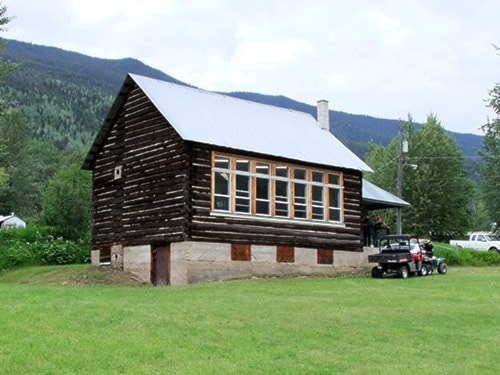As reported in an earlier story, Avola's log schoolhouse was both the site and the subject of an emotional public meeting last Tuesday.
On one side was Willow MacDonald, the Thompson-Nicola Regional District director for Thompson Headwaters (Area B). It certainly appears that she wants what is best for the community and that she has tried hard to open lines of communication. On the other hand, she does not have a lot of experience in running meetings and in dealing with an angry public.
Facing off against her was a group of Avola residents who seemed to have a shaky knowledge of how local government works. Some of them appeared to be suspicious of any form of government and to resent the fact that outside agencies were making decisions on their behalf.
Some seemed to think the open house would work like a New England town-hall meeting, where a simple show of hands by everyone present would make a binding decision. While many of us might sympathize with that point of view, such is not the case. MacDonald was the only elected official there and, as such, ultimately the decision was hers alone to make (although she would be foolish to ignore the wishes of those present and of her own services committee, plus she would eventually have to have her decisions upheld by the TNRD board of directors).
Some Avola residents still resent a decision made 30 years ago by the board of School District 26 (North Thompson) to close the Avola school. They feel that decision set the stage for the village's decline so that today there are no children left in the community.
In fact, the school board at that time had no choice. Avola's population was already in decline as a result of a decision by the provincial government several years earlier to change its forest tenure practices to favor consolidation of sawmills into bigger operations and to phase out the smaller, “gyppo” mills.
For all its faults, last Tuesday's meeting was a good example of democracy in action – a little bit messy, confused and confusing. Nobody got everything they wanted, but everybody (or nearly everybody) came away with sufficient satisfaction.
The trick now will be to keep up the momentum. What seems to be needed is an overall longterm plan or vision. What will Avola look like in five years? Twenty years? One hundred years? How will the log schoolhouse fit into that vision? For example, could other old buildings be brought in to the site to create a heritage village?
Those are questions that only the people of Avola can answer. The rest of us should do what we can to assist them as they begin the process of regrowing their community.
